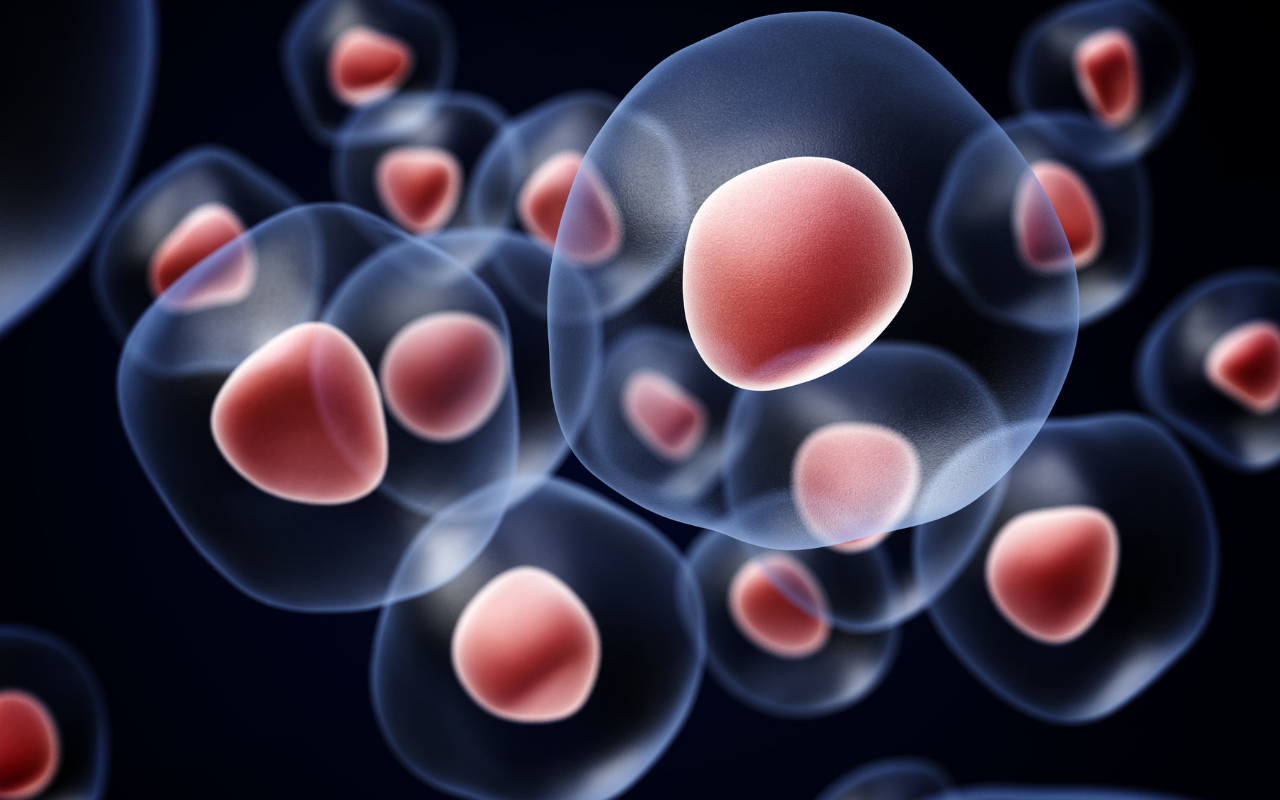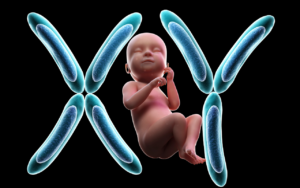Embryonic development is a captivating journey that begins with a single fertilized egg and culminates in a fully formed organism. Central to this remarkable process are the intricate phenomena of cell differentiation and fate determination. Cell differentiation involves the transformation of undifferentiated stem cells into specialized cell types, giving rise to the diverse tissues and organs that compose an organism. This process follows a blueprint encoded within the DNA, guided by complex molecular pathways. Fate determination, on the other hand, is the crucial decision-making process that dictates the specific role and function each cell will assume within the developing embryo. Together, cell differentiation and fate determination orchestrate the harmonious symphony of embryonic development, shaping the blueprint of life itself.
The mechanisms driving cell differentiation and fate determination during embryonic development are both intrinsic and extrinsic. Intrinsic factors encompass the genetic makeup of the cells and epigenetic modifications that control gene expression. These molecular switches lock cells into specific developmental pathways, dictating their ultimate destinies. Extrinsic factors, on the other hand, involve signals from neighboring cells, growth factors, and the extracellular matrix. These signals activate intricate molecular pathways, such as the Notch, Wnt, and Hedgehog pathways, which act as traffic directors, guiding cells towards their designated roles. Understanding the interplay between these intrinsic and extrinsic factors provides a deeper insight into the delicate dance that unfolds within the embryo.
Table of Contents
Two fundamental types of cell differentiation are lineage commitment and terminal differentiation.
Lineage Commitment
Cell differentiation is a pivotal process in embryonic development, driving the transformation of stem cells into specialized cell types with distinct functions. A critical aspect of this process is lineage commitment, where undifferentiated cells make irreversible choices about their developmental paths. During lineage commitment, cells become devoted to specific lineages, such as the ectoderm, mesoderm, and endoderm, each destined to give rise to specific tissues and organs. This commitment is orchestrated by intricate molecular signaling pathways, including those involving transforming growth factor-β (TGF-β) and bone morphogenetic proteins (BMPs), which play key roles in guiding cells toward their ultimate fates.
The process of lineage commitment begins during early embryonic stages, setting the stage for subsequent cell differentiation events. Signaling molecules from neighboring cells and the extracellular matrix activate intricate genetic programs that dictate a cell’s fate. For example, specific transcription factors and master regulatory genes become active, ensuring that cells follow predetermined developmental trajectories. This process not only establishes the foundation for the future structure and function of various tissues and organs but also ensures the coordinated development of the entire organism.
In the complex symphony of embryonic development, lineage commitment serves as a crucial conductor, directing cells toward their specialized destinies. Through the interplay of intrinsic genetic factors and extrinsic signals, cells make critical choices that shape their roles within the developing organism. The understanding of lineage commitment has profound implications in regenerative medicine and disease treatment, as it opens doors to manipulating stem cells to repair damaged tissues and replace dysfunctional cells. As research continues to unveil the intricacies of cell differentiation and lineage commitment, the potential for innovative medical therapies and groundbreaking discoveries continues to expand.
Terminal Differentiation
Terminal differentiation stands as a pivotal stage in the intricate process of cell differentiation. As cells progress through various developmental stages, they ultimately reach a point where they acquire specialized functions and morphologies that define their specific roles within tissues and organs. This critical process is driven by master regulatory genes and transcription factors that dictate cell fate. These genes act as genetic architects, orchestrating the intricate symphony of molecular events that guide a cell towards its final, distinct identity. Terminal differentiation involves the activation of specific genetic programs that culminate in the expression of unique proteins, enabling cells to carry out their designated functions effectively.
Molecular Mechanisms and Key Players
At the heart of terminal differentiation are the molecular mechanisms and key players that intricately shape a cell’s destiny during the broader process of cell differentiation. Transcription factors play an instrumental role, binding to specific DNA sequences and activating or repressing target genes that define a cell’s characteristics. Epigenetic modifications, such as DNA methylation and histone modifications, further reinforce terminal differentiation by stabilizing gene expression patterns. Signal transduction pathways, like the Notch and Wnt pathways, transmit external cues that guide cells towards specific fates. Through these orchestrated interactions, cells progress from a state of plasticity to one of specialization, embodying the remarkable complexity of developmental biology.
Implications and Beyond
The process of terminal differentiation holds profound implications in various fields, from regenerative medicine to disease understanding and treatment. Unlocking the molecular intricacies of this process not only enhances our grasp of developmental biology but also paves the way for innovative therapies. Stem cell-based approaches capitalize on the principles of terminal differentiation, offering the potential to generate specialized cell types for transplantation and tissue repair. As researchers delve deeper into the molecular signatures of terminal differentiation, new insights into developmental disorders and diseases may emerge, shedding light on novel therapeutic targets. Ultimately, the journey from undifferentiated stem cells to fully specialized cells exemplifies nature’s blueprint for creating the diverse array of cells that constitute the tapestry of life.
Fate Determination: Decoding Cellular Destinies
Fate determination is the process through which cells acquire specific roles and functions within tissues and organs. It involves a delicate interplay of intrinsic and extrinsic factors that guide cell development.
Intrinsic Factors
Fate determination, a pivotal process in embryonic development, hinges on a delicate interplay between intrinsic and extrinsic factors. Among these, intrinsic factors wield significant influence, shaping the destiny of cells as they navigate their developmental journey. These factors encompass the genetic makeup of the cell itself, as well as epigenetic modifications that act as a molecular compass, guiding cells toward their ultimate roles and functions within tissues and organs.
At the heart of intrinsic factors lies the intricate dance of genetics and epigenetics. A cell’s genetic blueprint lays the foundation for its developmental trajectory, dictating the potential paths it can take. Epigenetic modifications, such as DNA methylation and histone modifications, further refine these options by regulating gene expression. These marks act like molecular switches, silencing or activating genes as needed, ultimately locking a cell into a specific developmental fate. As researchers delve deeper into the molecular intricacies of these processes, the potential to manipulate fate determination for regenerative medicine and disease treatment becomes an ever more tantalizing prospect.
In the grand symphony of fate determination, intrinsic factors play a lead role, orchestrating the destiny of cells as they evolve from undifferentiated states to specialized functions. Understanding how genetics and epigenetics collaborate to steer these developmental decisions holds the key to unlocking revolutionary advancements in medical science. As the scientific community continues to decipher the code of cellular destiny, the prospect of harnessing intrinsic factors to shape and guide cell development becomes a beacon of hope for a healthier future.
Extrinsic Factors
Extrinsic factors play a pivotal role in the intricate dance of fate determination during embryonic development. These external signals, originating from neighboring cells, the extracellular matrix, and growth factors, hold the power to guide a cell’s developmental trajectory. The process of fate determination hinges on these cues, as they activate complex molecular pathways that ultimately dictate whether a cell will become a neuron, a muscle cell, or any other specialized type. These extrinsic factors act as the guiding stars that steer cells along their destined paths, ensuring the harmonious orchestration of the developmental symphony.
In the realm of embryonic development, extrinsic factors act as a symphony conductor, directing the cells to assume their unique roles. The intricate interplay between intrinsic genetic makeup and these external cues shapes the fate of a cell. Signals from neighboring cells initiate a domino effect, activating critical signaling pathways like the Notch and Wnt pathways. These pathways serve as messengers, relaying instructions that determine whether a cell should continue proliferating or embark on its journey towards specialization. The precise balance and timing of extrinsic factors are essential to ensure the accurate progression of fate determination.
Extrinsic factors don’t merely influence cells – they sculpt the destiny of entire tissues and organs. The role of these external cues extends beyond embryonic development, shaping the ongoing processes of tissue repair and maintenance. As researchers uncover the nuances of extrinsic signaling, the potential to harness this knowledge for regenerative medicine and disease therapy becomes increasingly apparent. With a deeper understanding of how extrinsic factors influence fate determination, scientists are inching closer to unlocking the secrets of tissue regeneration, offering hope for innovative treatments that could revolutionize healthcare in the future.
Signaling Pathways: The Orchestration of Developmental Signals
Cell differentiation and fate determination are heavily reliant on molecular signaling pathways that convey information between cells. Several key pathways have emerged as critical players in embryonic development:
Notch Pathway
Embarking on the remarkable journey of embryonic development, the Notch pathway emerges as a pivotal player in orchestrating the fate of cells. This intricate signaling pathway, deeply entwined with the cellular decision-making process, exerts profound influences on the formation of various tissues and organs. Operating at the crossroads of destiny, the Notch pathway governs critical choices in cell differentiation during embryonic development.
The Notch Pathway: A Signaling Symphony in Embryogenesis
At the heart of the Notch pathway lies a cascade of molecular interactions that sculpt the trajectory of cellular fate. As cells communicate with their neighbors, the Notch receptor, situated on the cell membrane, comes into play. When a neighboring cell emits a signaling molecule, such as Delta or Jagged, the Notch receptor undergoes a proteolytic cleavage. This event sets off a domino effect, releasing the intracellular domain of the Notch receptor to travel into the nucleus. Here, it teams up with transcriptional coactivators to influence the activation of target genes. These orchestrated actions drive cells towards specific fates, dictating whether they will differentiate, proliferate, or remain in a stem cell-like state.
Pioneering Possibilities: Notch Pathway’s Potential in Embryonic Development
The Notch pathway’s pivotal role in embryonic development has profound implications for our understanding of regenerative medicine and therapeutic interventions. As scientists delve deeper into deciphering the intricacies of this pathway, doors are opening to novel strategies for directing cell fate during tissue regeneration. Harnessing the power of the Notch pathway could lead to groundbreaking advancements in treating developmental disorders and injuries. In unraveling this signaling symphony, we uncover the secrets of life’s earliest stages, offering insights that could reshape the medical landscape in the years to come.
Wnt Pathway
The Wnt pathway is a pivotal molecular signaling cascade that exerts profound influence during embryonic development. This intricate pathway plays a crucial role in orchestrating cell fate determination, tissue patterning, and organogenesis. As a key player in embryonic development, the Wnt pathway activates a cascade of events that guide cells towards specific destinies, contributing to the formation of various tissues and organs.
Embarking on a Signaling Journey:
At the heart of the Wnt pathway lies a family of secreted proteins, Wnts, which initiate the signaling cascade. During embryonic development, Wnts bind to specific receptors on the cell surface, setting off a series of intracellular events. This prompts the activation of intracellular components like beta-catenin, which, when stabilized, accumulates in the cell’s nucleus. In the nucleus, beta-catenin partners with transcription factors, influencing the expression of target genes. These genes then drive the cell to adopt distinct fates, playing a critical role in tissue differentiation during embryonic development.
Shaping Embryonic Destiny:
The Wnt pathway’s role in embryonic development extends to various stages, including gastrulation, where it assists in organizing the three primary germ layers. It also guides the development of specific organs, like the brain, limbs, and heart. Dysregulation of the Wnt pathway has been linked to developmental disorders and birth defects, highlighting its significance in ensuring proper embryonic development. As researchers continue to unravel the complexities of the Wnt pathway, its potential for advancing our understanding of embryogenesis and regenerative medicine remains an exciting frontier in the realm of developmental biology.
By seamlessly integrating into the narrative of embryonic development, the Wnt pathway showcases its remarkable influence in sculpting the intricate architecture of life itself. As the scientific community delves deeper into its nuances, we gain insights that not only broaden our understanding of fundamental biological processes but also pave the way for innovative therapies that could revolutionize the treatment of developmental disorders and birth anomalies.
Hedgehog Pathway
The Hedgehog pathway stands as a pivotal player in the intricate symphony of embryonic development, orchestrating the fate of cells and guiding the formation of tissues and organs. This evolutionary-conserved signaling cascade derives its name from the Drosophila gene “hedgehog,” which, when mutated, led to embryos resembling spiky hedgehogs. Through a series of tightly regulated molecular interactions, the Hedgehog pathway impacts cell differentiation, tissue patterning, and organogenesis.
Decoding Hedgehog Signaling: A Molecular Ballet
At the core of the Hedgehog pathway lies a complex molecular choreography. The process commences with the release of Hedgehog ligands from sending cells, which then bind to receptors on receiving cells. This binding sets off a cascade of events that ultimately results in the activation of transcription factors, pivotal regulators of gene expression. These factors steer cells along specific developmental pathways, dictating cell fate during embryonic development. Dysregulation of the Hedgehog pathway has been implicated in congenital disorders and various types of cancer, highlighting its crucial role in maintaining proper embryonic development.
Hedgehog’s Reach: Beyond Embryonic Boundaries
While the Hedgehog pathway is instrumental in embryonic development, its influence extends far beyond the womb. This intricate signaling network continues to play a significant role in tissue repair, regeneration, and maintenance in adult organisms. As our understanding of this pathway deepens, so does the potential for targeted therapeutic interventions to address a range of developmental disorders and diseases. The Hedgehog pathway, once a humble gene in a spiky fly, has evolved into a key protagonist in the narrative of life’s complexity, with implications that span from the earliest stages of embryonic development to the realms of regenerative medicine.
Implications and Future Directions
Understanding the mechanisms of cell differentiation and fate determination during embryonic development holds immense promise for regenerative medicine, disease modeling, and therapeutic interventions. Stem cell-based therapies and tissue engineering could revolutionize the treatment of degenerative diseases and injuries, given our deepening knowledge of these processes.
Advancements in Regenerative Medicine: The profound understanding of cell differentiation and fate determination during embryonic development opens doors to revolutionary applications in regenerative medicine. With the ability to manipulate stem cells into specific lineages, scientists are poised to create tailored therapies for degenerative diseases and injuries. Harnessing these processes could lead to the regeneration of damaged tissues, restoring function and quality of life for countless individuals. This emerging field holds promise for personalized treatments that address the root causes of various ailments.
Insights into Developmental Disorders: Delving into the intricacies of differentiation and fate determination provides insights into the origins of developmental disorders. By uncovering the genes and pathways that orchestrate proper embryonic development, researchers can shed light on the mechanisms that go awry in conditions like congenital malformations and birth defects. This knowledge could pave the way for early diagnostics and targeted interventions, potentially mitigating the impact of such disorders on affected individuals and their families.
Pushing the Boundaries of Therapeutic Interventions: As our grasp of differentiation and fate determination deepens, so does the potential to design innovative therapeutic interventions. The precise manipulation of these processes could lead to novel treatments for a range of diseases, including those with a strong developmental component. From cancer therapies that target aberrant cell differentiation pathways to precision medicine approaches that capitalize on personalized cellular programming, the implications are vast and transformative. By merging cutting-edge research with clinical applications, the future holds the promise of reshaping the healthcare landscape and improving patient outcomes on an unprecedented scale.




